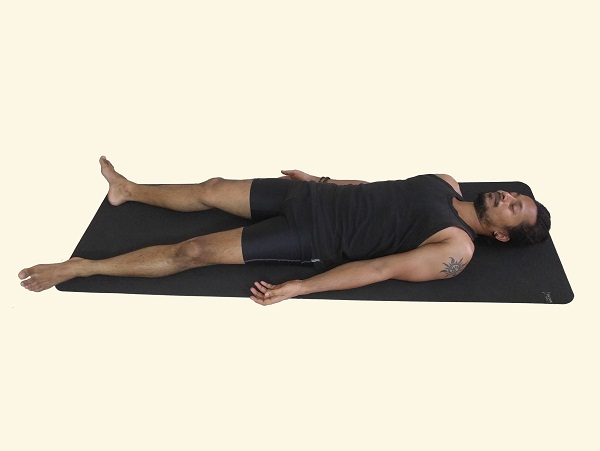Savasana, or corpse pose, looks like a very easy posture (you may have even seen the “I’m here for the savasana” t-shirts) and while it may not be physically demanding, it is very challenging to completely still the body and the mind while remaining alert and aware. Usually what happens is people get bored or distracted and start moving around, or they fall completely asleep.
You have to try to find the bridge between the awareness and the sleep state. As you sleep your awareness turns off (it’s very hard to remember the exact time when you fell asleep because the waking awareness just gets shut off). In savasana, you must resist the temptation to fall asleep but equally resist the temptation to get lost in the imagination.
Various techniques can be employed for keeping the awareness focused and functioning during the savasana. Some popular ones we use are;
- Rotation of consciousness around the body parts just like in Yoga Nidra.
- Focusing on internal sounds of the body.
- Chanting a mantra in the mind with complete focus on the mantra.
- Fixing your gaze at the third eye or any other energetic point/chakra on the body.
While giving a class the teacher can also chant a mantra and ask the students to focus on the sound and the vibrations it produces in the body, this is particularly helpful for beginner students who find it difficult to calm the mind.
Savasana is particularly useful for a full-body reset. If you are able to enter into 5 minutes of proper savasana, you can remove the fatigue and stress from the body, and get back up energized ready to carry on.
Shavasana or Savasana can be done at any time either in between your yoga practice or at the end of the practice. This posture is also called Mritasana (a dead man’s pose)

Steps:
- Lie flat on the back with arms by the sides of your body (about 6 inches away), palm facing up (a thin pillow or folded cloth may be placed behind the head to prevent discomfort).
- Move your feet slightly apart to a comfortable position and close your eyes.
- The Head should be at the center, make sure it doesn’t fall to one side.
- Stop any physical movement and try to relax the whole body.
- Concentrate on your breath and slowly your body will become relaxed (a good way to do it is to mentally start counting your breath)
- Stay in the posture for at least 10 minutes.
Variation:
If you have anterior pelvic tilt (APT), then your lower back might be more curved and away from the floor. This would make you a bit uncomfortable. To counter this keep a pillow under the knee so that the knee is lifted a bit higher. This will decrease the strain on the lower back.
Benefits:
- It develops the mind and body awareness.
- Helps to reduce nervous and muscular tension.
- Helps to reduce the metabolic rate.
- Helps to reduce blood pressure and heart rate.